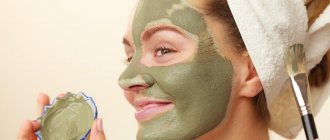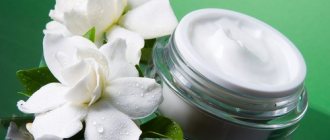Root or core callus is the most difficult type of callus to treat. A callus has a core (root) that is located deep in the skin and can even penetrate into soft tissue. This is a late stage of dry callus development.
Externally, such a callus looks like an area of keratinized skin, and inside it a funnel is visible. The formation is quite dense and causes pain when walking. In some cases, it is completely impossible to walk with such a callus - when the rod is already located deep enough and has penetrated into the soft tissue, squeezing the nerve endings.
Most often, calluses appear on the toes, under and between them, and on the heels. Interdigital calluses are the most painful.
Medical diagnosis of callus
Core-type calluses are fairly easy to diagnose.
After an in-person consultation, a dermatologist can provide a conclusion and diagnosis about the type of skin growth.
The only difficulty may be differentiating an ingrown callus from Verruca plantaris (plantar wart).
Because they have the same location and appearance.
You can distinguish a callus from a wart by the following features:
- An ingrown callus is not accompanied by bleeding even with strong pressure on it.
- A wart, unlike a callus, is not a single formation. Typically, upon examination, several warts that resemble cauliflower can be identified.
- The callus in its central zone has a small depression, which can be seen upon detailed examination. In the case of a wart, the HPV formation consists of thin fibers; petechiae (black dots) are observed on top, which bleed when injured.
- If a wart is present, pain occurs when the lesion itself is palpated; there is no pain when walking. In the case of calluses, pain is observed with any mechanical movement.
To confirm the diagnosis and determine the cause of the disease, the dermatologist prescribes a blood test for diabetes mellitus.
Also an analysis to determine the human papillomavirus, to exclude HPV.
Additionally, the doctor can redirect the patient to other specialized specialists.
See a podiatrist (a doctor who treats foot pathologies), a rheumatologist or an orthopedist.
An important point is to exclude Morton's neuroma.
Morton's neuroma is a benign or non-cancerous growth of fibrous tissue.
Develops in the area of the tibial nerve, most often between the third and fourth fingers.
The pathology is accompanied by thickening of the plantar nerve, pain when walking, and a feeling of numbness in the fingers.
The disease is also known as Morton's metatarsalgia, plantar neuroma, and intermetatasal neuroma.
Causes of such calluses
Root calluses are formed under the influence of internal and external factors. External - long-term and intense friction that occurs due to wearing too tight or uncomfortable shoes, as well as high-heeled shoes. Such a callus can also form as a result of a foreign body (for example, a splinter) getting into an untreated wound in a timely manner.
Callus can also appear due to internal reasons:
- the patient has dermatological diseases;
- increased sweating;
- lack of vitamins and microelements in the body;
- diabetes mellitus
Methods for treating and removing ingrown calluses
The only and effective method of eliminating this problem on the legs is to remove the stratum corneum of the callus and its root.
In this case, it is important to completely remove not only the surface of the callus, but also the root.
Otherwise, the risk of relapse reaches 100%.
There are various methods for removing calluses; the optimal treatment option is selected individually.
Depending on the clinical signs, the neglect of the case and how deep the root has penetrated into the layers of the dermis.
Traditional methods
Many people are looking for ways to remove corns with a core using folk remedies. For this it is recommended to use baths.
A bath with soap and soda has worked well. If the stem of the growth is not too long, then this remedy will help quickly remove the callus. You need to dilute 1 tbsp in hot water. l. soda and the same amount of grated soap. Use the hand or foot bath for 30 minutes. Then rub the callus with a pumice stone. 5-10 procedures will be required.
You can use a mustard bath. To do this, dissolve natural dry mustard powder in hot water. Carry out the procedure for 30 minutes, and then rub the growth with pumice. More than 5 procedures will be required.
Propolis can be used to remove calluses. Steam the growth. Melt a little lard with propolis and form a ball. Mash it into a cake and apply it to the callus. Secure with a bandage and leave until the morning.
Before the procedure, steam your hands or feet (depending on where the callus is located) and wipe dry. Soak the medicinal patch with salicylic acid and propolis, stick it on the growth and walk with it for 2 days.
When treating calluses with a core with a remedy such as vinegar, you need to take a regular patch, apply vinegar essence to it, which needs to be diluted a little with water. Stick it on the growth, walk all day, then take it off at night, and in the morning stick the patch with vinegar again.
Take onion and garlic in equal proportions and prepare a paste from them. Apply it to the steamed formation, and make a bandage on top. To completely get rid of a callus with a core, approximately 10 such procedures will be required.
At night, apply a compress made from finely grated potatoes and onions. Wrap the resulting mixture in gauze and apply to the callus. Wrap the top with plastic wrap. Keep the compress on all night. In the morning, remove the formation and spread with rich cream.
Before using any of these remedies, you should consult a doctor so as not to harm yourself.
Removing callus using drilling
This procedure can be carried out in a pedicure salon.
During the manipulation, a special device resembling a drill is used.
The procedure does not require the use of anesthesia.
Since it is not accompanied by pain.
Drilling/excision of callus areas is carried out using special attachments.
An antibacterial ointment is first placed in the deepening of the callus to prevent the development of the inflammatory process.
For the first few days, the patient may feel minor discomfort, which goes away on its own and does not require treatment.
Dry callus is removed using a similar method, but provided that it is not neglected.
The drilling procedure has certain disadvantages:
- If the rod is located deep enough, this manipulation may be ineffective. Often several manipulations are required to completely remove the callus.
- In the process of drilling out the keratinized area of the dermis, damage to healthy skin is possible. The procedure requires a highly qualified specialist.
- This type of callus removal is a contact type of procedure, which means it is accompanied by an increased risk of infection.
Carrying out prevention
It is important not only to know how to remove a callus with a core, but also how to prevent its occurrence. Doctors say that following certain rules will help protect against the occurrence of unpleasant pathologies. The main means of prevention is maintaining good personal hygiene. To do this you need:
- wear clean and dry shoes;
- try to wear socks made of natural materials and regularly monitor their cleanliness;
- after a shower, it is good to clean the keratinized area with a pumice stone, and then apply a moisturizer;
- wear comfortable shoes made from natural materials.
If core calluses form quite often, then a consultation with an orthopedic doctor is required. Perhaps the reason for the formation of such growths is the incorrect position of the foot. Special insoles prescribed by an orthopedist will help solve this problem.
In any case, treatment will be faster and more successful if it is started immediately. You should not allow further ingrowth or spread of the callus. If a rod has formed, you need to consult a specialist.
Removal of callus with liquid nitrogen (cryodestruction)
Cryodestruction is an innovative, highly effective method of removing calluses on the foot, heel or toes using liquid nitrogen.
During the procedure, the keratinized area of the skin is frozen, after which the destruction of the callus is observed.
It has been noted that the procedure is associated with an extremely low rate of callus re-development.
Many dermatologists note that no other method for removing core calluses gives results as favorable as cryodestruction.
Removing callus with liquid nitrogen takes about 10-20 minutes.
It is performed under local anesthesia, so the procedure is completely painless and safe.
Side effects are extremely rare (no more than 3% of cases).
Include callus recurrence, pain, discomfort, bleeding, infection, scarring.
The first few days after the procedure, the formation of a cold bubble is observed, which under no circumstances should be pierced.
Within 10-14 days, the healing process occurs; a crust forms in place of the bubble, which falls off on its own.
The process is not accompanied by the formation of scars.
The procedure is usually well tolerated, with minor discomfort possible.
Some disadvantages of cryotherapy:
- If the rod is extremely deep, cryodestruction is not always able to completely rid the patient of the callus.
- If you do not properly care for the skin after the procedure, there is a risk of an infectious process.
- Freezing the callus with liquid nitrogen is not used when large areas of the epidermis are affected. Cryodestruction used on large calluses can lead to a number of complications. For this reason, in advanced cases, they resort to other therapeutic methods.
Symptoms of an ingrown callus on the foot
An ingrown callus on a toe or foot is a rough, round “wart” with a depression in the center (if you look at a photo of an ingrown callus, you will notice that this depression seems to be closed with a plug). Inside the formation there is always a root (rod) that penetrates deep into the tissue.
Patients with an ingrown callus complain of pain while walking, as well as when pressing on the affected area.
If you notice similar symptoms, consult a doctor immediately. It is easier to prevent a disease than to deal with the consequences.
Laser excision of callus
Laser callus removal remains a priority treatment method.
Allows you to effectively eliminate the problem with minimal risk of recurrence.
The laser penetrates into the deep layers of the dermis, which makes it possible to remove the root completely, rather than partially.
The operation of the device is based on the reproduction of a laser beam with special light properties:
- Monochromatic: Has only one specific wavelength or color.
- Coherence: Vibrates in the same phase or synchronously.
- Divergence: the beam works in a given direction.
During the manipulation, the epidermal layer is “burned out”, one after another.
The manipulation requires the use of an anesthetic.
The average session duration is no more than 10-15 minutes.
Before using the laser, the callus is treated with antiseptic drugs.
After laser irradiation, a dense crust forms, which will disappear after 10-14 days.
Laser treatment to remove calluses leads to cell regeneration.
It has an anti-inflammatory effect and stimulates the local immune system.
Thus, it promotes rapid healing of wounds.
However, the main advantage of the laser is the complete removal of callus even with a deep root location.
Often, one visit to a dermatologist is enough to effectively eliminate the problem.
Drug treatment
Answering the question of how to treat a callus with a shaft on the foot, it must be said that medications help a lot, but they can only be used after consultation with the treating doctor. They will help you fix the problem at home.
Before using any product to treat calluses, it is important to steam and soften the skin. It is important to ensure that no infection gets into the open wound, and it is also important to completely remove the entire rod.
For home use, liquids and gels that freeze the formation, as well as callus plasters, are suitable. The main active ingredient of gels and liquids is salicylic acid. To avoid damaging healthy areas, it is important to strictly follow the instructions and precautions.
To remove dry calluses with a core, you can use Nemozol cream. You need to apply it directly to the affected area using a cotton swab, and then cover the treated area with a band-aid. After 2 days, remove it and remove the exfoliated skin. If necessary, repeat the procedure until the result is achieved.
A callus with a shaft on the foot can be removed using Super Antimozolin ointment. You need to apply this product thickly to the keratinized area and cover with a band-aid or cloth. If possible, keep warm, but do not heat it. After 2 hours, remove the skin and repeat the procedure.
Stop Corn liquid helps a lot. It should be applied to the steamed problem area 2-3 times a day, and then lightly cleaned with a pumice stone.
You can use a corn patch with a stick. This is a modern and quite effective tool. Its action is based on salicylic acid, as well as many other natural ingredients that enhance their effect. If the skin is damaged, you should not use this patch.
A good remedy is a patch for calluses with a “Salipod” rod. It is impregnated with salicylic acid, sulfur and other components. In order for this product to have an effective effect, here are the basic rules for using the patch:
- wash the area with the callus, pat dry with a towel;
- wipe the well-treated area with alcohol to remove excess fat;
- cut off a piece of plaster similar in size to the problem area;
- remove the film and stick to the affected area;
- secure it on top with a bandage or simply stick a bandage on it.
The course of therapy with a patch ranges from 2 days to 2 weeks, it all depends on the depth of the rod. It is contraindicated to apply to healthy skin; it cannot be used during pregnancy, or together with medications for diabetes and cancer.
You can use combination products that contain several acids at once, as well as natural ingredients. They are mainly used for old calluses. To enhance the effect, they are used as compresses after steaming the skin. Here are a few such tools:
- "Mozolin."
- "Green Pharmacy"
- "Bensalitin."
It is possible to eliminate callus with the help of such means only if they are used for a long time and regularly.
Radio wave removal of callus
Callus removal by radio wave is carried out using a special device “Surgitron”.
The Surgitron device uses advanced radio wave technology.
Ensures accuracy, versatility and safety of medical procedures.
The surgical electrode, which is a tungsten wire, emits 3.8 MHz radio waves and slides through the tissue without putting pressure on it.
The pathologically changed area is evaporated, which leads to the destruction of the callus.
An important advantage is that the electrode is self-sterilizing during use, which reduces the likelihood of infection after the procedure.
Other benefits of radio wave treatment:
- Excellent cosmetic results; the manipulation is not accompanied by the formation of scar tissue.
- Fast recovery for the patient, since the treatment process does not affect the healthy tissue surrounding the callus.
- Reduced postoperative pain; in addition, the manipulation itself is not accompanied by pain.
After radio wave removal, the callus becomes covered with a crust, which falls off on its own after 7-10 days.
After which a new, healthy layer of new skin appears, which over time blends with the natural color of the epidermis.
Treatment of callus with medications
It is immediately worth noting that drug treatment of calluses has the least therapeutic effectiveness.
This phenomenon is associated with the inability of drugs to penetrate deep into tissues, eliminating the root of the formation.
The products used for core calluses often contain keratolytic components and can be effective at the beginning of callus development.
As a rule, products based on salicylic acid are used.
Salicylic acid is a keratoplastic and keratolytic agent.
In addition, it has an antibacterial and antifungal effect.
Salicylic acid works by softening keratin, a natural protein that is part of the skin's structure and produced by the body.
The drug has a softening effect on the stratum corneum of the dermis, which facilitates its removal.
Salicylic acid is often used in combination with other substances.
Allows for a higher therapeutic effect.
When using salicylic acid preparations, the simultaneous use of the following drugs is not recommended:
- Alcohol-containing medications.
- Any other local medications that contain dibenzoyl peroxide or retinoid.
- Soapy substances that have a drying effect.
- Cosmetics that have an exfoliating effect.
Traditional medicine in the treatment of calluses
Folk remedies cannot affect the development of callus and are not an effective treatment method.
The treatment and removal of callus must be carried out by a qualified specialist.
This will minimize negative consequences and complications.
It is necessary to begin treatment of callus in the early stages of its development.
When there is still a chance to get rid of the problem without resorting to surgical methods.
As it progresses, the root of the callus will penetrate into the deeper layers of the epidermis.
Then it may be necessary to use more radical and expensive methods of therapy.
Carrying out diagnostics
Before starting treatment, it is necessary to diagnose and determine the nature of such an abnormal growth as accurately as possible, so a correctly made diagnosis will help determine the program for future therapy. Usually, a dermatologist is visually able to determine the type of callus based on its appearance alone. You can confuse a callus with a wart, but there are some differences between them. Growth with a rod inside:
- does not bleed even with strong pressure;
- formed as a separate node;
- There is a small depression in the center.
It is important to conduct a comprehensive diagnosis, which includes blood tests:
- on sugar levels;
- glycated hemoglobin content;
- antibody titers to the HIV virus.
Only after diagnosis the doctor selects the necessary treatment.










